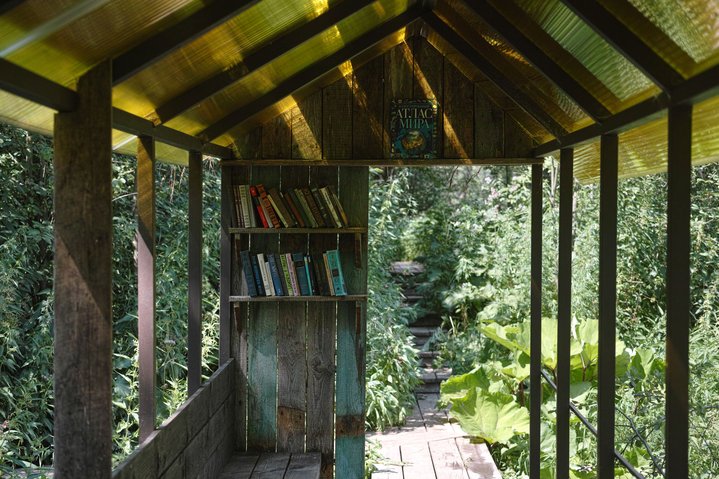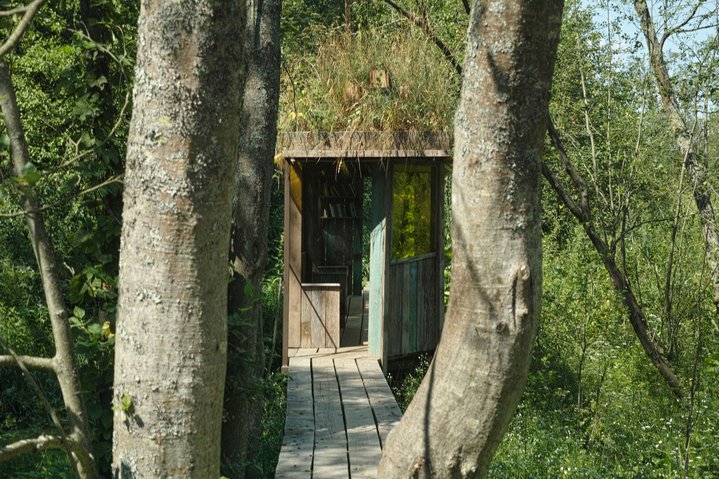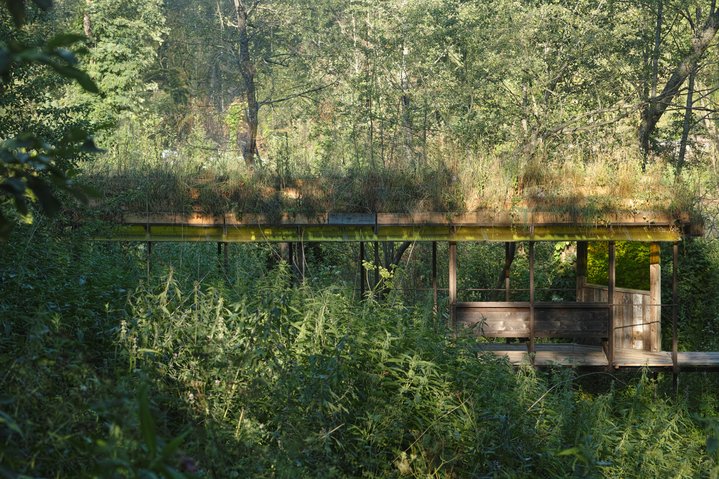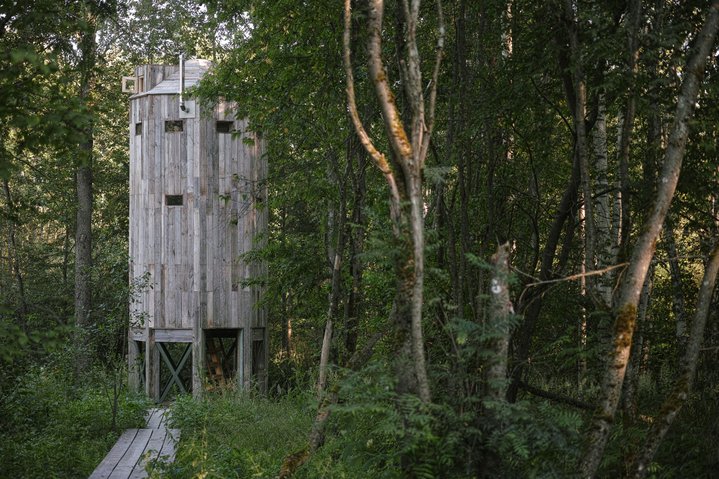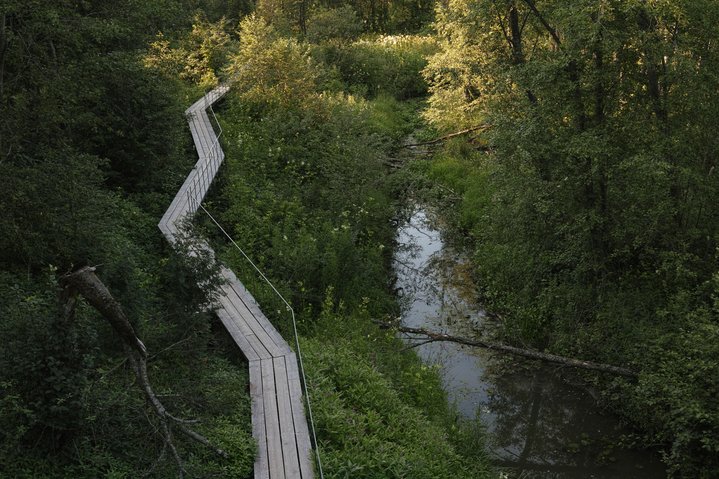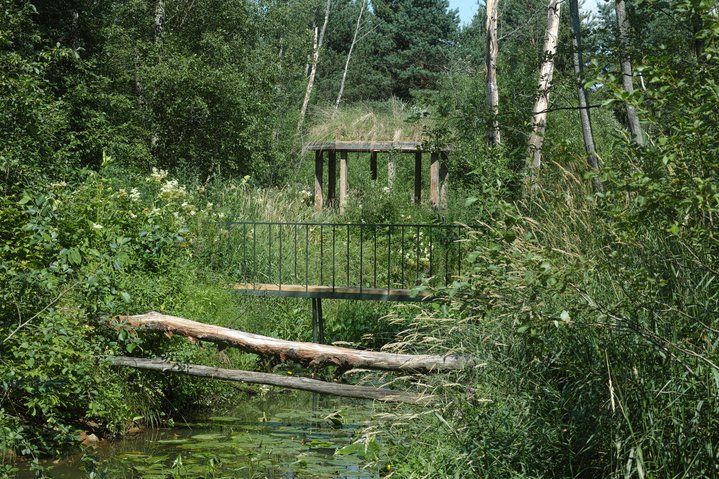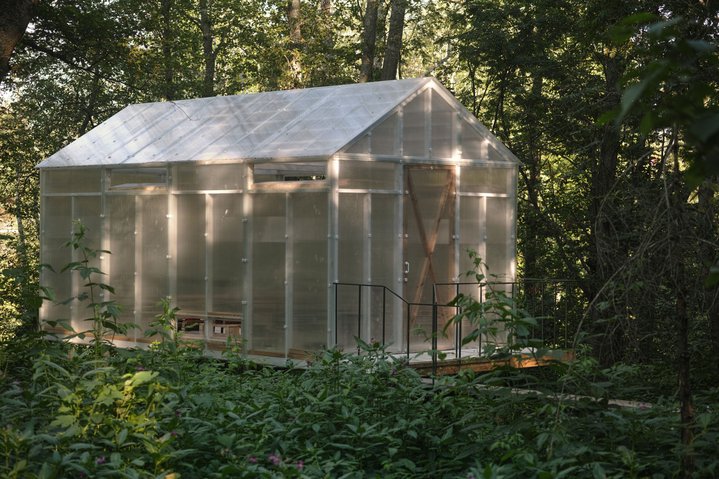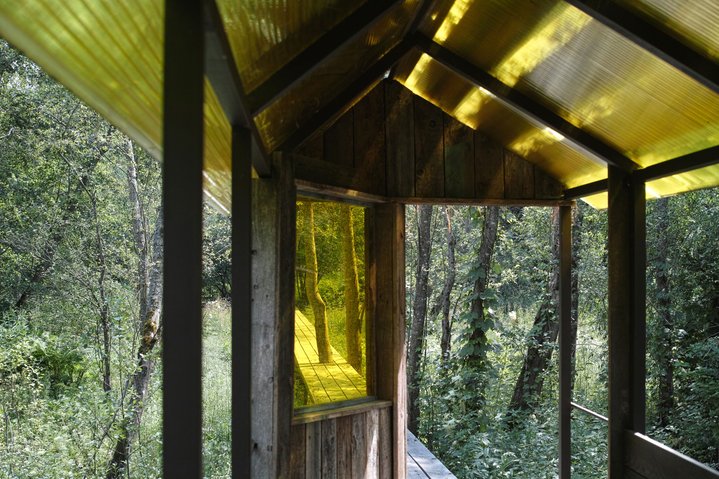Veretyevo: art on the swamp
A new land art installation by the Russian artist Alexander Brodsky (b. 1955) is “a park inside of a park”, where nature, architecture and reading are interlaced to create various narratives about time, nostalgia and escape.
During Soviet times, Veretyevo village was known for its pioneer camp [a labour and leisure camp for children]. Then, when the country collapsed, so, too, it did and was abandoned for many years. In the 1990s, the land was bought by Andrey Gnatyuk, a business entrepreneur in the fields of publishing, political technologies and PR. Alongside winning impressive government contracts, he was publishing art books and the first contemporary art magazine ‘Khudozhestvenny zhurnal’. As a child, Gnatyuk had spent summers in the camp at Veretyevo and wanted to make a recreational park there for his friends and business partners. Among his close friends were artists, architects and designers, including Alexander Brodsky (b. 1955), Evgeny Asse (b. 1946), Andrey Biljo (b. 1953), Olga Soldatova (b. 1965), Igor Gurovich (b. 1967) and many others. Together, they breathed new life into Veretyevo, creating a kind of “private paradise” for their closest circle to have fun together, put on parties and make happenings, where they would ironically reminisce about their Soviet childhoods.
In 2008, Veretyevo was chosen as a venue for a special project of the 1st Moscow international biennale for young art called ‘Stop! Who’s coming?’. From then on, art installations started appearing in the park: Andrey Kuzkin’s (b. 1979) installation ‘A place where nobody bothers’, an iron hatchway to an underground bunker, and the remains of his famous performance ‘Going round in a circle’; Haim Sokol’s (b. 1973) ‘Alley of veterans’ with pieces of drainpipe mounted on pedestals; Arseny Zhilyaev’s (b. 1984) ‘Arrival of a tractor’ – a black suprematist tractor stuck in a swamp. These works now live here alongside sculptures specially commissioned for the park - white statues of pioneers recalling Soviet camp sculptures; human sized, carved figures of famous Soviet cartoon characters, or a statue of the Russian poet Alexander Pushkin depicted as a gun wielding hooligan.
The most recent cultural layer added to Veretyevo is an art intervention, which was inaugurated in June this year: Alexander Brodsky’s Park project with thirty-eight objects spread over the eight hectares. The project is a profound artistic reflection on the park as an indispensable part of the classical Russian manor estate - or as a place to escape from pioneer camp with your favorite book and not be disturbed by anyone.
You enter the park from the river bank through a big, fallen willow tree, which has formed a kind of natural grotto and then you step on a bridge track which leads you into the forest. You walk above a swamp along giant burdocks, nettles and wild raspberries and discover architectural quotes from classical 18th century landscaped parks. Swamps have particularly strong historical associations in Russia, seen as a metaphor of disappearance, oblivion and inviolability. St. Petersburg was built on a swamp and the longest and the straightest track in the park is called ‘Prospect’, alluding to the main street of the city, Nevsky Prospect. The central pavilion is called ‘Pantheon’ and it is unsurprisingly a kind of cathedral located on the main crossroads.
Commenting on the park ensemble, Russian architectural critic Grigory Revzin noted “what Brodsky did to the modern ecological park in Veretyevo is what Horace Walpole, a philosopher of the English picturesque park, did to the French parks of Louis XIV. He ruined it, brought chaos to the mathematical order of the alleys of Versailles. He has reimagined the motif of the Russian landscape park and transformed it into a lost ecological paradise”.
Alexander Brodsky is well known for objects and installations showing the poetry of ruins, both lyrical and tragic. Employing used materials considered rubbish, such as wooden boards from an old fence; window or door frames painted in white oil paint; rusty armatures he creates “monuments” to times gone by. Similarly, in the 18th century, Giovanni Battista Piranesi was drawing ruins of imaginary colossal Roman buildings, appealing to the concept of vanitas. Brodsky’s ruins which have a DIY look similarly make us think about time running out and how life is so inevitably short. The pavilions look particularly fragile being surrounded by nature’s exuberant growth and even though they have just been built, there is a sense that they have been here for decades. It is almost as if you stumbled upon some old dacha where people had just left their books and gone out.
Writing about books, parks are traditionally a great place for reading, just think about how often you see people sitting on park benches with a book in their hand. Curator, journalist and literary critic Anna Narinskaya saw Brodsky’s Park itself as a metaphor of a book – with its trails being story lines, its objects events and its visitors characters. Thus, some of the constructed spaces in the park house dedicated libraries with carefully chosen books accentuating either the purpose of the building or the mood in which a visitor should find themselves. There are books about reclusion and solitude in the Hermitage, a big collection of Russian poetry in the Observatory, books about pirates in the Underground pavilion close to the water, books about travelling in the Roofed Bridge. There is also a Library pavilion that looks like a greenhouse: inside a reading room with dozens of books on Anna Narinskaya’s reading list. Not their first collaboration, in 2019, Narinskaya and Brodsky presented an installation together titled ‘Non-Babylon Library’ at the Jewish Museum and Tolerance Centre in Moscow.
Brodsky’s park is certainly a place to enjoy quiet solitude, to meditate, to think, breath deeply and connect with nature (in summer, horseflies and mosquitoes are all there in abundance to connect with you, too, so do not forget to take your insect repellent!). The wooden trails are too narrow for even two people to walk alongside each other comfortably. Veretyevo generally is the perfect place for quiet, solitary leisure – everybody choses what to do on their own, there are no group programs, animation, festivals or other group activities, unlike in a real pioneer camp. If you are looking for a place to escape from Moscow for a weekend, but are not ready to travel far, Veretyevo is a good destination.






